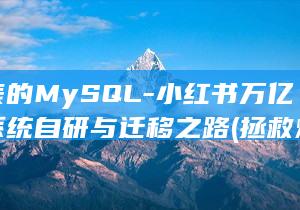小模型的秘诀-自主构建大-AI基础软件 (小模型的秘诀是什么)
Company Introduction
DataCanvas, with the mission of creating an intelligent exploration platform, aspires to empower global enterprises' intelligence upgrading. As a leader in China's AI foundation software field, the company focuses on developing autonomous and proprietary AI foundation software products and solutions, providing users with comprehensive AI foundation services.
DataCanvas aims to assist users in effortlessly achieving bidirectional enablement of models and data during digital transformation, enhancing enterprise decision-making capabilities in a cost-effective and efficient manner, thereby enabling enterprise-level, scaled applications.
AIFS (AIFoundationSoftware)
Addressing Challenges in the Ageof Large Models
The era of large models demands efficient computing power infrastructure and management of other infrastructure and resources. To address these challenges, DataCanvas has established a complete software system called AIFS (AIFoundationSoftware), consisting of four layers: model tools, large model capabilities, an AI foundation platform, and computing power management.
AIFS Layers
-
Computing Power Layer:
- Leveraging the rapid advancement of domestic GPUs and significant progress in large models and GPUs by vendors like Huawei.
- Constructing GPUCloud for unified management of heterogeneous GPU resources (NVIDIA and domestic GPUs).
- Reducing engineering costs and enhancing resource utilization.
-
Model Tool and Database Layer:
- Key technologies: DingoDB multi-modal vector database and AI development tools (APSFastLabel, APSLMB, APSLab, APSInference).
- DingoDB: A distributed vector database, storing multi-modal data of any size, featuring high concurrency, low latency real-time analysis capabilities, and processing multi-modal data.
- AI development tools enable efficient handling of challenges in the era of large models and rapid implementation of AI applications.
-
Large Model Layer:
- DataCanvas Alaya, a large model supporting multiple data formats (video, image, text).
- Capabilities to build small models, providing libraries of algorithms, scenarios, features, and metrics.
- LMOPS: A comprehensive set of model building tools (PromptManager, LargeModelTraining, LargeModelServing).
AIFS Advantages
- Leading AI application building infrastructure platform.
- Supports building both large and small models.
- Covers the full lifecycle of large models (training, fine-tuning, compression, deployment, inference, and monitoring) and the entire process of small models.
- Supports various modeling modes, catering to the diverse needs of data scientists, developers, and business professionals.
- Facilitates collaboration among different roles on the AIFS platform, enabling seamless data handling and joint development, training, and deployment of models of any scale.
Model Building Toolkit
Empowering Large and Small Model Building
AIFS provides a comprehensive toolkit to empower the building of both large and small models.
Data Preparation
- Data sources: Universal data, industry data, private data, and instruction data.
- Data processing: Data cleaning, transformation, and augmentation, tailored to different data types.
- Data annotation: Manual and intelligent annotation.
Model Development
- Model selection: LLAMA, LLAMA2, Falcon, Bloom, etc.
- Training: Using prepared data or pretrained weights.
- Fine-tuning: Alignment operations.
- Efficient fine-tuning using PEFT for organizations with limited CPU resources.
Model Deployment
- Deployment options: Cloud, on-premises, or hybrid.
- Optimization techniques for inference latency and cost.
Model Management
- Centralized model repository.
- Version control and tracking.
- Monitoring and anomaly detection.
【AI产品经理】第五篇-AI模型构建全流程
AI需求上线的全流程有:AI问题定义、模型预研、数据准备、模型构建、模型验收、工程开发、测试发版、上线运营、迭代优化。
在需求分析阶段,AI产品经理已经完成了对问题的抽象,将业务问题转换成了使用AI模型解决的问题。在AI模型构建的流程中,不需要了解技术细节,但对整个建模流程的了解,可以帮助产品经理更好把握开发进度、并协调业务侧进行数据集准备。
AI模型构建主要包括5个阶段:模型设计、特征工程、模型训练、模型验证、模型融合。
(1)模型设计
在模型设计阶段,产品经理需要考虑的是当前业务问题需要使用的模型,算法团队是否有相应技术储备、目标变量应该怎么设置、数据如何获取。
(2)特征工程
数据和特征决定了机器学习的上限,而模型和算法只是逼近这个上限而已。特征工程首先要进行数据清洗,主要处理数据缺失、异常值、分布不均衡、量纲不一致等问题;接下来进行特征提取,对各类数据(例如数值型数据、标签型数据、非结构化数据、网络关系型数据等)进行相应处理;然后进行特征选择,选取对于对模型因变量信息贡献度较大的特征,用于模型训练。
(3)模型训练
模型训练是通过不断训练、验证和调优,让模型达到最优的一个过程。将数据集划分成训练集和测试集,进行模型训练和模型测试。模型训练过程是寻找一组参数,构成决策边界,最优的决策边界即是模型拟合能力与泛化能力的平衡点。
(4)模型验证

模型训练的目标是找到拟合能力和泛化能力的平衡点,让拟合和泛化能力同时达到最优,避免欠拟合和过拟合,满足业务侧对于模型性能(分类模型:F1、KS、AUC等;回归模型:MSE、MAE、RMSE等,下篇将介绍模型评估)和稳定性的需求。
(5)模型融合
模型融合主要包括三种方式,Bagging:相互独立地并行学习弱学习器,并按照某种确定性的平均过程将它们组合起来;Boosting:以一种高度自适应的方法顺序地学习这些弱学习器,并按照某种确定性的策略将它们组合起来;Stacking:并行学习异质弱学习器,并通过训练一个元模型将它们组合起来。
了解AI模型构建的全流程有助于AI产品从需求到上线全流程的把控,避免产品经理对于模型开发的认知为黑盒,无法评估工作量和排期,在与业务侧沟通的过程中可以进行更加专业的沟通和预期引导,也更容易获得他们的认可。
ai(Adobe Illustrator)入门基础教程
01 AI软件基础综述4免费在线观看
链接:AI软件基础综述4
免责声明:本文转载或采集自网络,版权归原作者所有。本网站刊发此文旨在传递更多信息,并不代表本网赞同其观点和对其真实性负责。如涉及版权、内容等问题,请联系本网,我们将在第一时间删除。同时,本网站不对所刊发内容的准确性、真实性、完整性、及时性、原创性等进行保证,请读者仅作参考,并请自行核实相关内容。对于因使用或依赖本文内容所产生的任何直接或间接损失,本网站不承担任何责任。












